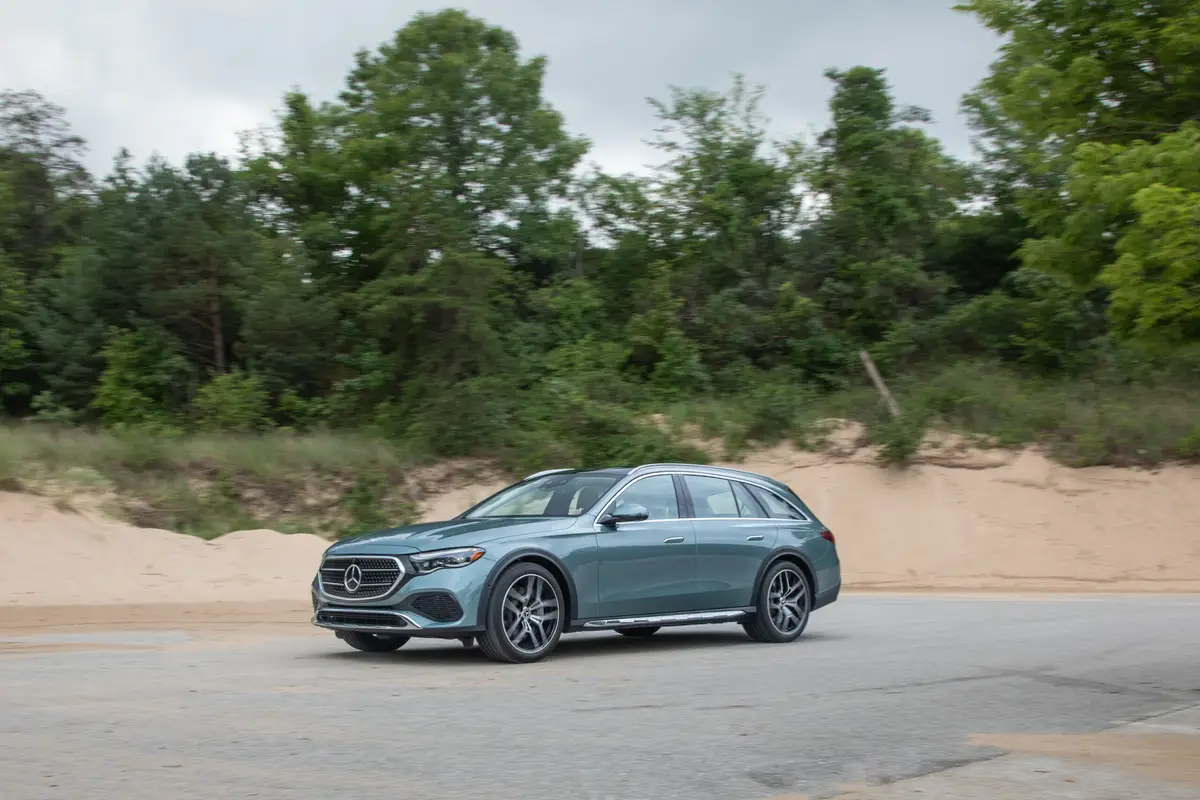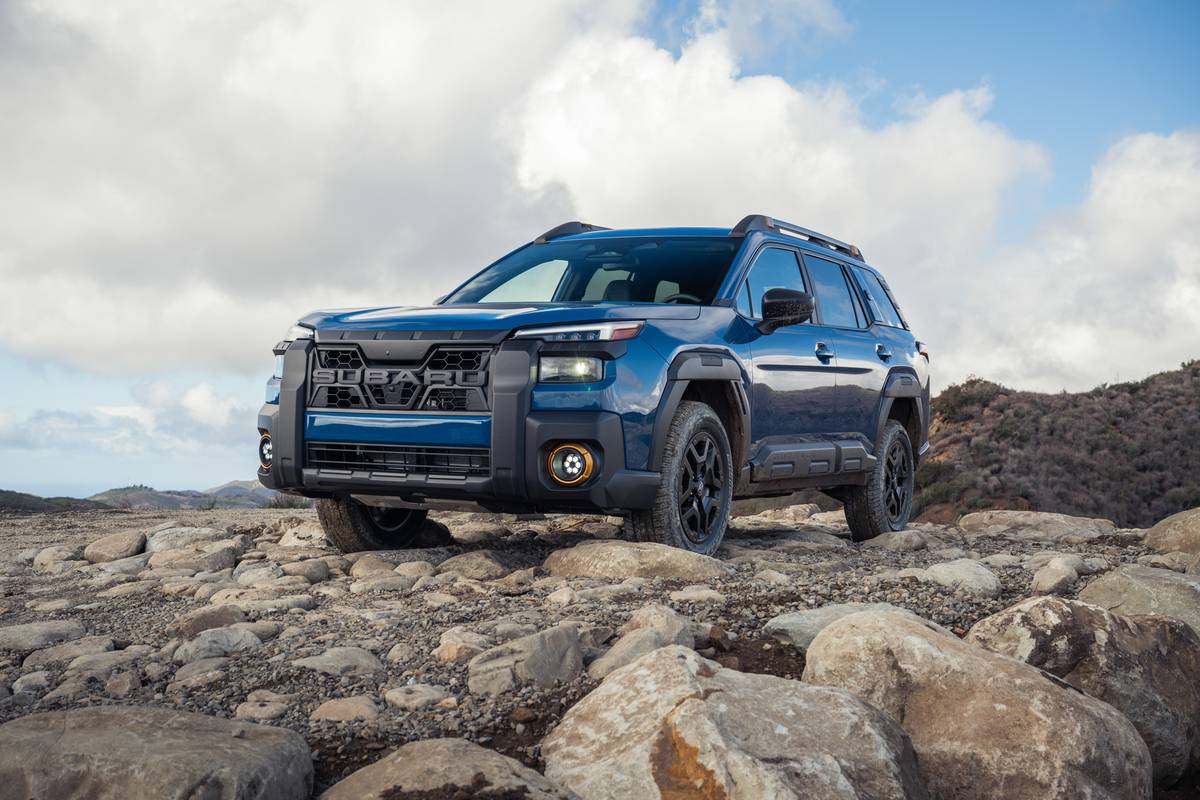Boston.com's view
The answers:
1. Two, three, five, or six.
2. SUV, pickup truck, heavy hauler, family vacation vehicle, open-to-the-wind cruiser.
3. The 1968 Chevrolet Corvette.
The questions:
1. Depending on configuration, how many people will the 2002 Chevrolet Avalanche 1500 four-wheel drive carry?
2. What sort of vehicle is this thing?
3. Where did the idea of a removable rear window come from?
Pull into virtually any venue – supermarket, ballfield parking lot, fishing camp, restaurant – driving the new Avalanche, with its sharp lines and heavily-clad military bearing, and you will attract attention. First, it is the size that grabs folks. This is a pickup truck built on the Chevrolet Suburban platform.
Second, there’s that cladding down along the front, back along the sides, that wraps it in an aura of indestructibility. It’s got four full-size doors, an option to which Chevrolet was late in coming a couple of years ago, but an option that is quite popular today as families look for multipurpose vehicles.
But most of all, it has a feature no one else offers as yet (there will be those who copy, you can be sure). That’s the midgate – a gate behind the rear seats that folds down and turns a bed that is just under 6 feet long into a bed that will hold, with rear gate closed, an 8-foot sheet of plywood.
Chevrolet, looking to leapfrog the pack in the highly competitive truck-as-SUV market, is gambling on the midgate and its promise of variety.
With the midgate up, the Avalanche carries either five or six, depending on whether a bench or bucket seats have been installed up front. Lower the gate and, again depending on front seat choices, it holds two or three.
Lowering the gate is easy. First, you raise the base of the rear seat and fold it forward. Next, the back of the rear seats folds down. Unlatch the midgate and fold it forward onto the backs of the folded seats, creating a flat, 8-foot-1-inch bed that extends from the back of the front seats to the closed rear gate.
But before folding the gate down, there is one more option. With a couple of easy twists of knobs, the rear window comes out and can be inserted into a holding spot on the rear gate and tucked safely beneath it after folding. Now, tall 8-foot objects will fit right up into the cab of the truck.
If you’re hauling a long, low load, the window can be left in place. This also offers the advantage of security since a lockable tonneau cover made up of three removable sections can be left in place. That same tonneau cover provides shelter and security for the shorter bed, as well.
The bed and its walls are made of a nick/dent-resistant mix of steel, a GM product called Pro-Tec, and other composites. I hauled bicycles and landfill material back there and didn’t leave a mark. The only doubts I had about the system is that when the midgate is folded down, there is nothing to protect the inside trim of the rear doors should loads shift.
A nice feature of the Avalanche’s hauling capacity is the use of the wide, deep wells of the sides of the cargo box. They have covers, are lockable, and are good for tools, camping gear, or as ice bins.
The Avalanche, because the midgate needs stiffer support than would be offered by a standard pickup truck platform with separate cabin and bed platforms, is built on the fully boxed frame rails of the Suburban. It also has the rear coil springs of the Suburban, far superior for a multiuse vehicle such as this, since standard leaf springs found on many pickup platforms are not as stable or comfortable when it comes to hauling people rather than strictly huge loads.
The interior design seems right out of the new Suburban and that is a good thing. The seats are broad and firm, audio and climate control knobs and buttons are big and easy to use, and those wonderful full-hand-grip interior door handles are used.
Because this is basically a Suburban with half its roof remo , Chevrolet had to stiffen the body. This was accomplished with sweeping arcs (wrapped in cladding) at the center pillar. Besides looking tough and doing the job of adding stiffness, they also seem to play a role in keeping wind out of the interior when the midgate is down and the window is removed. In fact, I was surprised at the lack of noise or wind turbulence, even at 70 miles per hour, with the back wide open.
The Avalanche is powered by a 285-horsepower, 5.3-liter, V-8 engine that produces a more than respectable 325 lb.-ft. of torque. The midgate is also available in the 2500 Series for those who find the 1500 is just not a big enough tug.
The Avalanche rides like – surprise – a Suburban. Not like the old, stiff yet rear-end-hopping Suburban, but like the new Suburban: steady at speed, stable and with only some body roll in reasonable highway lane changes, top-heavy only in the hardest of cornering.
The four-wheel-drive version driven did fine in moderate testing in an old logging area where I like to take 4WD rigs. It’s not a vehicle meant for rigorous off-roading – it’s too big for that – but it will get most people through anything they encounter or any challenge they choose.
These are days of constant evolution and amalgamation in the worlds of trucks, SUVs, all-wheel drive, four-wheel drive, and station wagons. One becomes the other becomes the next. For now, the latest next is the Avalanche, a true multipurpose option.
2002 Chevrolet Avalanche 1500 4WD 200
Base price: $33,245
Price as tested: $37,951
Horsepower: 285
Torque: 325lb.-ft.
Wheelbase: 130.0 inches
Overall length: 219.3 inches
Width: 79.5 inches
Height: 73.3 inches
Curb weight: 4,850 lbs.
Seating: 2-6 passengers
Fuel economy: 14.7 miles per gallon
(Source: General Motors Corp.; fuel economy from Globe testing.)
Latest news



